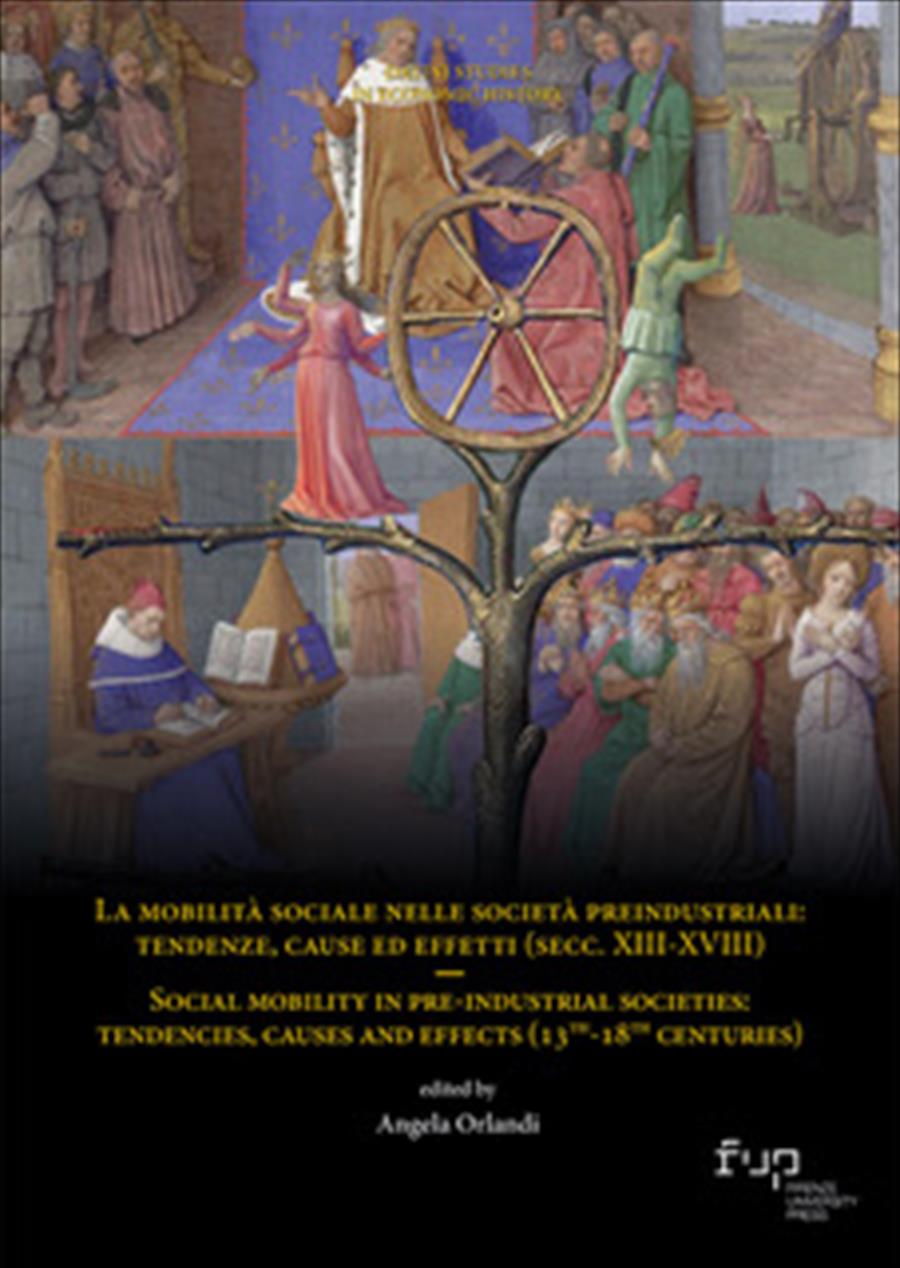
La mobilità sociale nelle società preindustriali: tendenze, cause ed effetti (secc. XIII-XVIII) / Social mobility in pre-industrial societies: tendencies, causes and effects (13th-18th centuries)
Edited by: Orlandi, AngelaScheda libro
Altre news
Social mobility in pre-industrial societies: tendencies, causes and effects (13th-18th centuries)
08/05/2025
When thinking about how best to frame this prolusion to the Settimana Datini, which this year is dedicated to social mobility, I was first and foremost faced with a dilemma: where to begin?1 With the relatively little we know from previous publications on this topic? With an overview of what I think were the long-term developments of social mobility? Both seemed fine options, but in the end, it occurred to me that, first and foremost, we need to understand why we are convened here to discuss social and economic mobility, which is not at all a traditional research topic for economic historians. Although this topic is somewhat implicit in the work of many, it is only in the last decade or so that social mobility has become an explicit objective of research in economic history. When thinking about how best to frame this prolusion to the Settimana Datini, which this year is dedicated to social mobility, I was first and foremost faced with a dilemma: where to begin?1 With the relatively little we know from previous publications on this topic? With an overview of what I think were the long-term developments of social mobility? Both seemed fine options, but in the end, it occurred to me that, first and foremost, we need to understand why we are convened here to discuss social and economic mobility, which is not at all a traditional research topic for economic historians. Although this topic is somewhat implicit in the work of many, it is only in the last decade or so that social mobility has become an explicit objective of research in economic history. I believe that there are two reasons for this new interest, one direct and one indirect. First, the direct one: we are concerned about the levels of social mobility today, which in much of the world, and definitely across most of the West, tend to be perceived as low and declining. Consequently, we seek to better understand mobility in the past because we want to figure up what is happening today (it is a well-known fact that the questions we ask when exploring the past are often determined by the present, that is by the epoch that we live in and by the challenges that our own society is facing). The second, indirect reason for which many social and economic historians are now looking at social mobility, is that this avenue of research seems to be a logical next step after all the collective effort that went into exploring long-term trends in economic inequality, an effort which has substantially intensified from the beginning of the Great Recession in 2008 (Wade 2014; Alfani 2024a). This refocusing of the attention from inequality to mobility was surely important for me personally: the two I believe that there are two reasons for this new interest, one direct and one indirect. First, the direct one: we are concerned about the levels of social mobility today, which in much of the world, and definitely across most of the West, tend to be perceived as low and declining. Consequently, we seek to better understand mobility in the past because we want to figure up what is happening today (it is a well-known fact that the questions we ask when exploring the past are often determined by the present, that is by the epoch that we live in and by the challenges that our own society is facing). The second, indirect reason for which many social and economic historians are now looking at social mobility, is that this avenue of research seems to be a logical next step after all the collective effort that went into exploring long-term trends in economic inequality, an effort which has substantially intensified from the beginning ERC projects that I led focused on inequality first, and later aimed to add social mobility to the picture. Even if, arguably, our enquiry into social mobility (as our enquiry into economic inequality) is largely driven by ‘modern’ concerns, this does not exclude that by adopting this perspective we can look in new ways at the past, and maybe we can reach a better understanding of certain historical phases, and of certain courses of individual action. To clarify this point I will resort to an example particularly suitable to the occasion: that of Francesco di Marco Datini.